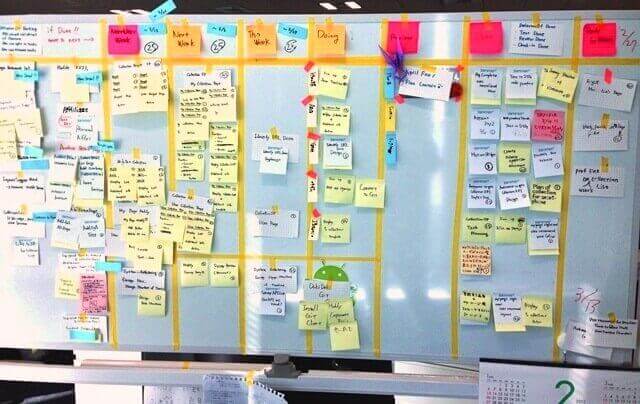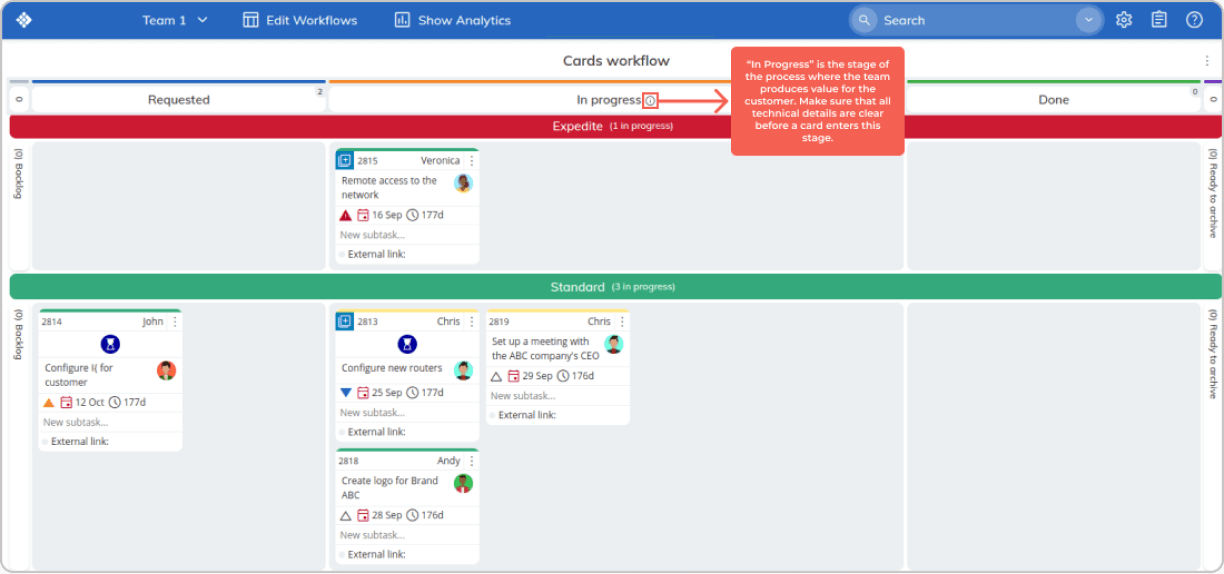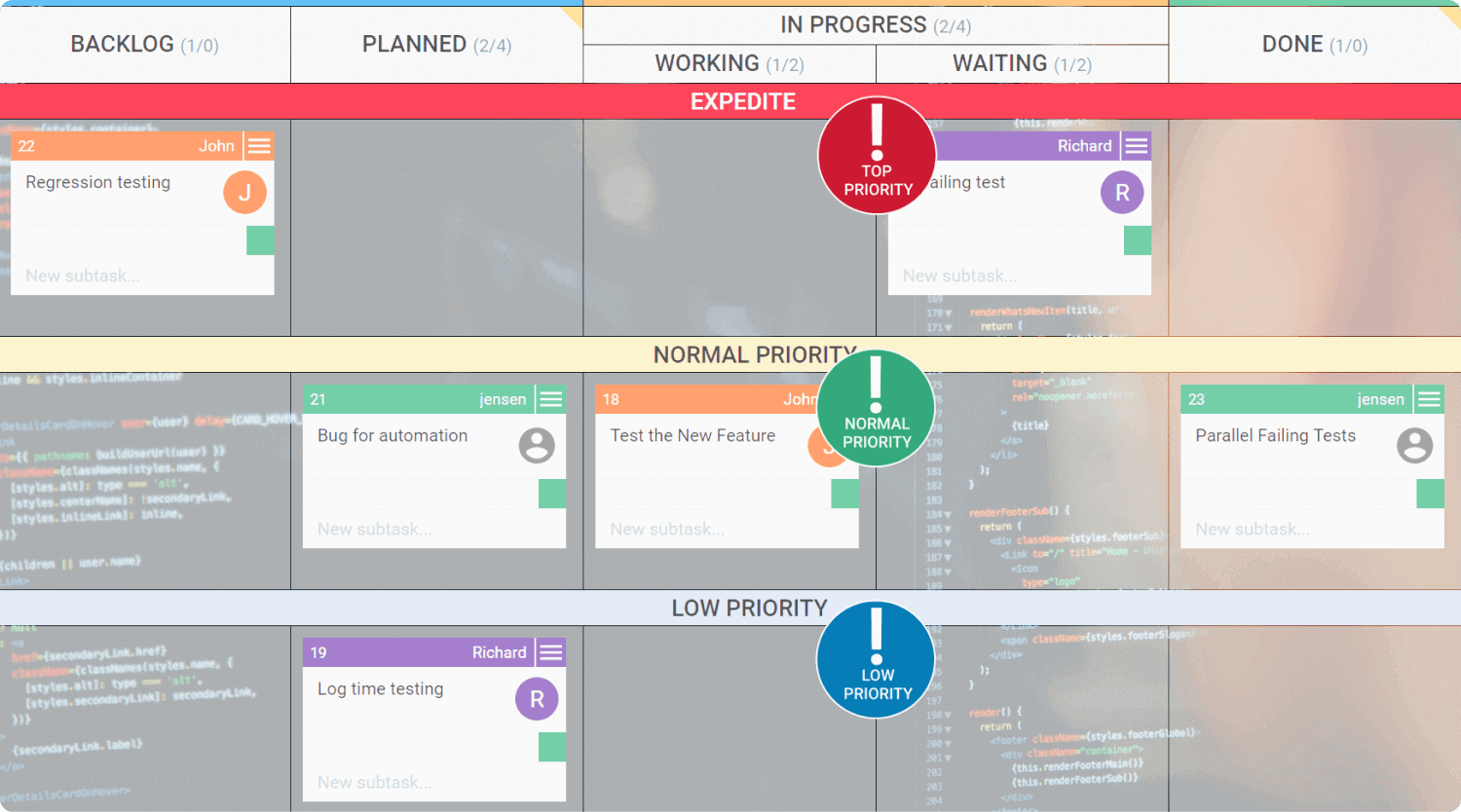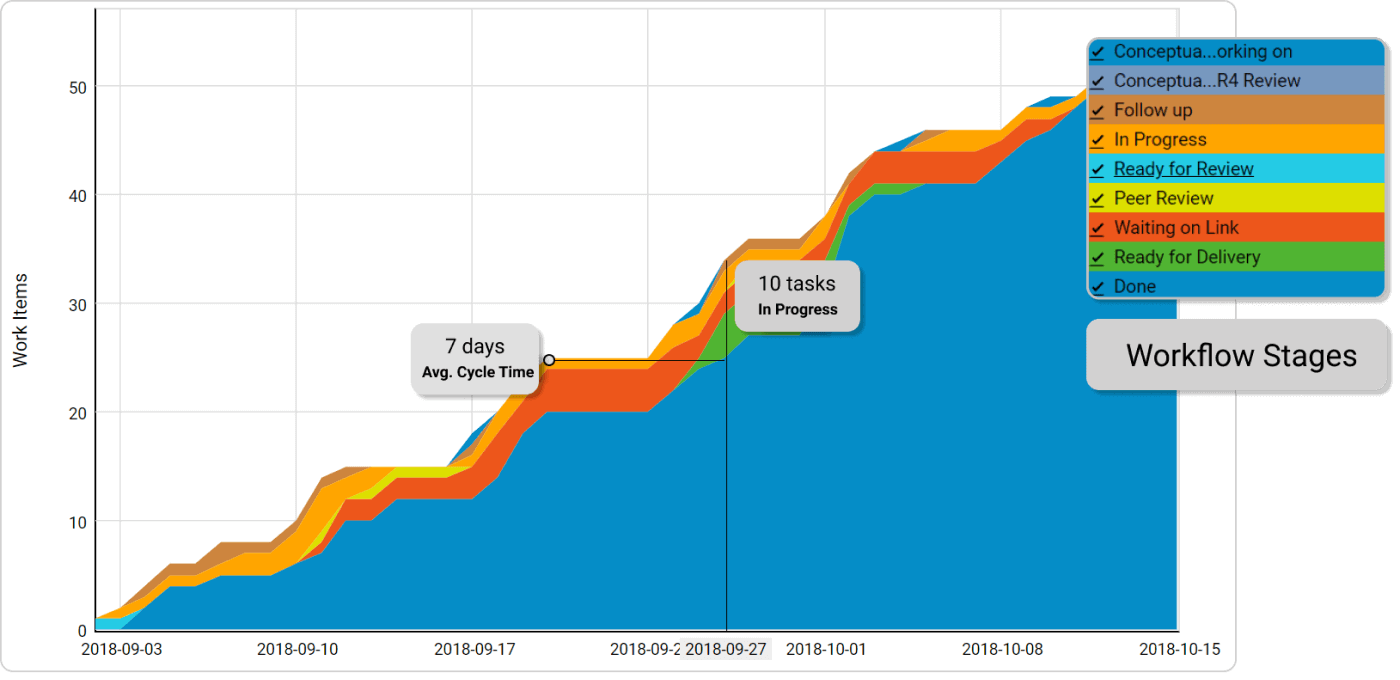Sherlock Holmes famously stated in Arthur Conan Doyle's "A Study in Scarlet," "It is a capital mistake to theorize before one has data." Let's put aside the fact that these words come from a legendary fictional detective and focus on their essence: the crucial role of data in making informed decisions and transforming it into actionable insights.
Where does one begin with such a task? The answer lies in visualization. Long recognized as a pivotal step in data analysis, visualization is a cornerstone of modern work management tools, with visual task boards leading the charge. However, there's a common oversight: using a task board doesn't necessarily mean you're practicing Kanban. A Kanban board is more than just a collection of columns and cards; it's a strategic tool designed to enhance team productivity.
With that in mind, let's delve into what differentiates a task board from a Kanban board and how you can leverage each to maximize your team's potential. This journey starts with understanding the unique definitions and objectives of each board type
What Is a Task Board?
Simply put, a task board is a type of visual management tool that people use to keep track of and manage their work. The work items are usually visualized as "cards" that people move through the board towards completion. Cards include finished, in progress, or not yet started work items. As to the structure of the boards, typically, they consist of a few columns representing different work stages. It is possible, however, to tailor boards to meet the needs of teams based on the boards' flexible nature and teams' evolving processes.
 Visualization of a physical task board
Visualization of a physical task board
Task boards are widely used by teams and entire organizations, not just by individuals. They help teams:
- Visualize work items
- Share information
- Keep everyone on the same page
- Improve collaboration
In other words, task boards assist teams in improving their basic performance. However, it takes much more to become a stellar performing team.
Let's see how a kanban board can help you achieve this.
What Is a Kanban Board?
An online Kanban board is a tool for work visualization, designed to help people bring clarity to their work process and enhance efficiency by:
- Visualizing all work
- Limiting the work in progress
- Making explicit process policies
- Managing flow
- Implementing feedback loops
A basic Kanban board has 3 main areas - Requested, In Progress, and Done, and cards (representing the work items) move from left to right until completion. In the same way as a task board, you can customize your Kanban board according to your specific needs.
 Basic kanban board
Basic kanban board
Originating from the shop floor at Toyota as a visual scheduling system, nowadays, teams and organizations from various industries use kanban boards to understand their process and overall workflow better. Once implemented, Kanban boards can help you enable long-term improvements in your processes, as well as:
- Enhanced visibility
- Increased productivity
- Greater flexibility
- Improved team focus
- Decreased levels of waste
- Better collaboration
- Improved predictability
Task Boards and Kanban Boards: Are They Really the Same Thing?
It is easy to see that a task board and a kanban board have much in common. Both types provide work visualization and help improve team collaboration. The benefits teams can experience from using these visual management tools are numerous, and that’s why they are widely used in managing teams’ daily work.
Indeed, respondents interviewed in a report on Agile cited that 77% of them use Kanban boards, and 67% - task boards as a technique to plan and manage their Agile projects. (Source: State of Agile Report 2021)
However, despite their similarities, we should also consider their differences before assuming that these two are the same thing.
Yes, a task board can be viewed as a Kanban board. However, not every task board qualifies as a Kanban board. This is true because not every task board is designed following the Kanban principles, and most importantly, not every task board is utilized to help processes and teams improve over time.
Having said that, let's dive deeper into this last statement and see why using a task board does not mean efficiency in every way.
What Sets Apart Task Boards from Kanban Boards?
It is crucial to remember that simply visualizing your work on a board does not necessarily mean that you apply Kanban. Sure, this is an essential part of adopting the Kanban method, but it is not enough to optimize your efficiency and improve continuously. You need to follow all established Kanban principles and practices for better results.
When building your board, we'd advise you to begin by mapping every step in your process -from request to delivery. This process is called value stream mapping - a fundamental tool in the Lean philosophy that helps you identify and eliminate waste, reduce process cycle times, and implement process improvements.
Efficiency results from a well-defined and clean process. Otherwise, your board will only serve as a place to store all your tasks and track their status. If you are new to Kanban, start with a simple structure and gradually improve your board by following the Kanban guidelines and best practices. As a result, you will learn how to maintain a workflow management system that ensures you work efficiently and deliver value faster.
How to Go from a Simple Task Board to a Master Kanban Board?
Let's now examine some good practices for maturing your task board into a true Kanban board.
1. Applying WIP Limits
A key component of Kanban is applying WIP limits to your workflows. They restrict the maximum number of work items in the different stages of the workflow. Limiting WIP allows you to finish work faster by helping your team focus only on what's currently in progress. When a work item is completed, users can pull a new one from the backlog whenever they have the capacity. This creates a pull system allowing users to work on a single thing at a time, generating an optimized flow and reducing process waste.
 Visualization of WIP limits on a board
Visualization of WIP limits on a board
- A Real-Life Example of Applying WIP Limits
This is exactly how the Engineering department of Instana, a high-growth SaaS company, stabilized its work flow. They defined a WIP limit in a dedicated column in the backlog area and pulled the incoming requests at their own pace. Focusing on finishing work allowed them to predict how long it would take to complete a request and helped them wipe out the mountains of piled-up unfinished assignments.
2. Defining Commitment Points
A commitment point in kanban is a point in the workflow where a work item is ready to be pulled into the system and flow through it. Usually, when mapping your workflow on a kanban board, you have a Discovery and Delivery process. The first one creates a consistent stream of ideas before committing to work on them. This is the first commitment point in your process. Once all your ideas and customer requests are refined, they enter the Delivery process, where the actual work starts. The moment before delivering the final work to the end customer marks the second commitment point.
 Commitment points on a board
Commitment points on a board
Defining commitment points in your work process helps you understand your team's capacity and prevent over-commitment. You can build an efficient and healthy delivery workflow by combining them with WIP limits and explicit work policies.
3. Setting Process Policies
As with everything else in Kanban, setting process policies should be developed collaboratively among all team members. This way, everyone shares their input, gains clarity about the process, and contributes to improving it.
Furthermore, developing work policies in collaboration enables a common understanding of how a process works. For instance, your team can determine the conditions under which a work item is completed considering all the client's requirements. Doing so can establish an explicit policy of what "done" should mean in their work process.
 Visualization of process policies on a board
Visualization of process policies on a board
Developing work policies not only creates better collaboration among teams but also boosts engagement and unlocks improvement ideas.
4. Prioritizing Work Items
Prioritizing work items is a necessary step in increasing team productivity and boosting effectiveness. A kanban board makes this even easier since work is visualized and progress is visible. In addition, functionalities to some advanced kanban board solutions, such as colors, swimlanes, tags, and stickers, can serve as prioritization criteria to red-flag what needs to be done first.
 Prioritizing work items using swimlanes
Prioritizing work items using swimlanes
5. Tracking Cycle and Lead Time
Cycle time and lead time are two of the most important Kanban metrics. They provide valuable insights into your team's operations and performance. By tracking these metrics, you can make a more accurate forecast of how long it would take for work items to be completed, identify bottlenecks, and have a better understanding of your team's work capacity.
 Tracking lead time and cycle time on a cumulative flow diagram
Tracking lead time and cycle time on a cumulative flow diagram
- A Kanban-Empowered Digital Transformation as an Example of Stabilized Cycle Time
The story of Boa Vista, an Analytical Intelligence Brazilian company, and how they managed to stabilize cycle time is worth reading.
When they initiated a digital transformation journey, a critical pain point to tackle was the long delivery cycles lasting from one to six months. Therefore, it was essential for them to measure how the Kanban-empowered workflow adjustments affected the teams' performance.
As such, gradually applying kanban practices like work visualization, defining WIP limits, introducing feedback loops, and having the right tools to measure the accumulated effect, allowed them to reduce their cycle time and stabilize their process. Keeping a close eye on the cycle times created a more stable and predictable process. Furthermore, looking at a cycle time trend line allowed teams to narrow down where they needed to focus their improvement efforts.
6. Tracking Throughput
The throughput metric counts the number of work items completed in a given period on the kanban board. It is a key metric that measures performance and shows your process's effectiveness. Tracking throughput helps you maintain a stable workflow and provides you with accurate delivery forecasts.
Let's see how that works in practice.
- A Real-Life Example of Doubling Team's Throughput in 12 months
The Software Development team in the Mechanization department of Sensata started an initiative to improve their workflow using the Kanban method. They needed to increase the team's throughput and deliver value faster with better predictability.
The team started by applying various kanban practices such as work visualization, adding queuing stages, defining work policies, introducing work types and classes of service, and work-in-progress limits to set a well-functioning kanban system. As a result, a year after the initiative was started, the team's throughput increased from 17 (average number of completed requests March-May 2020) to 43 (average number of completed requests March-May 2021).
In a Nutshell
Regardless of the nature of our business or how many people are involved, task boards help us plan, manage, and optimize our processes way more effortlessly. Considering the broad options out there, you need to choose carefully what type of board would work best for your use case. There is no right or wrong option; rather, it depends on what your goals are.
If you are looking for a simple work management tool, task boards are your solution. In contrast, kanban boards bring a more advanced work structure while transforming your entire mindset and the company's culture. As long as it works for you, go for it!

Michaela Toneva
Marketing Specialist
Outgoing person with a passion for all things marketing. Never-ending drive to learn new things. Topics of interest: world history, true crime, and unsolved mysteries. Loves Geography and Dancing.



